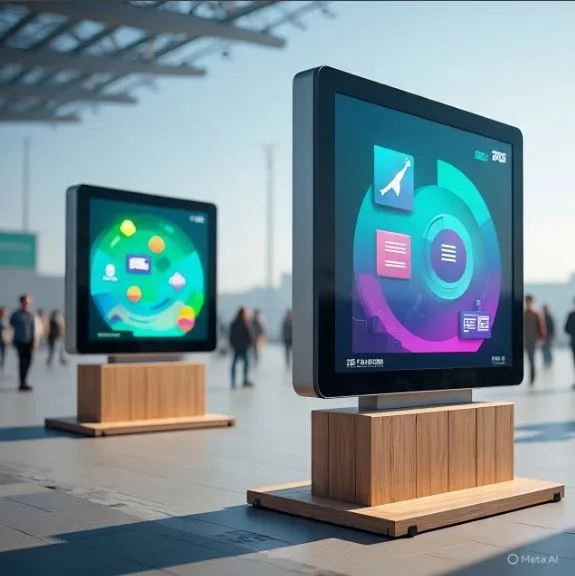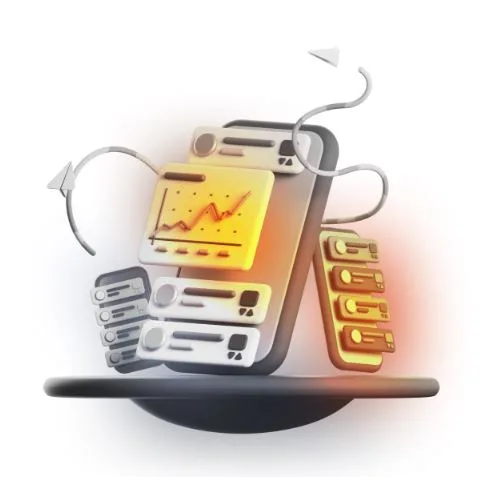Event Signage Trends 2025: From Digital to Eco-Friendly Displays
If 2024 was the year events truly came back to life, 2025 is the year event signage gets smarter, greener, and far more dynamic. Gone are the days when a few foam boards and a step-and-repeat could carry an entire conference. Today’s audiences expect live, responsive displays that guide, delight, and inform—without leaving a heavy footprint. Below, you’ll find the top trends shaping event signage this year, plus practical tips to help you plan, design, and measure signage that actually moves the needle.
Why event signage still matters
Even in a world of event apps and push notifications, signage remains the most reliable, universally visible way to orient and engage people on-site. It solves four timeless jobs:
- wayfinding, 2) schedule and update delivery, 3) brand storytelling, and 4) sponsorship visibility. The twist in 2025? Each job is now delivered with richer content, better data, and more sustainable materials.
1) Digitally native signage becomes the default
LED video walls and high-brightness LCDs aren’t just for keynote stages anymore. Expect to see micro-LED tiles, dvLED ribbons, and ultra-narrow bezel displays popping up in foyers, hallways, and lounges. The benefits:
- Instant updates: Swap agendas, room changes, and sponsor rotations in seconds.
- Contextual content: Morning programming can feature wayfinding and coffee promos, while evenings pivot to social recaps and tomorrow’s highlights.
- Motion as a magnet: Subtle animation (kinetic typography, micro-motion in backgrounds) draws the eye and improves message recall.
Pro tip: For high-traffic corridors, choose a pixel pitch that maintains crisp readability at typical viewing distances (e.g., 2.5–3.9mm for mid-range). And always test contrast in realistic ambient light.
2) Content automation and AI save your team’s sanity
The content treadmill used to be brutal; now automation helps. Templates feed live data (room updates, speaker changes, sponsor rotations) into a universal content system that pushes to every screen. Add AI to:
- Generate variations of sponsor placements that match brand guidelines.
- Prioritize messages by time, location, and congestion data.
- Personalize lobby displays based on session tracks (e.g., show developer sessions near the dev lounge).
Pro tip: Build your event signage content library around modular components—logo lockups, color tokens, and typographic scales—so you can reuse across screen sizes without re-designing from scratch.
3) “Phygital” links: QR, NFC, and short URL best practices
Physical signs increasingly serve as on-ramps to digital experiences: scanning a QR to save a session, tapping an NFC puck to open a product demo, or visiting a short URL for speaker slides. What’s new in 2025:
- One-scan check-ins at micro-venues.
- Per-sign UTM parameters so you can track which banner, column wrap, or tabletop tent actually drove traffic.
- Device-aware redirects that open the app if installed, or the web if not.
Pro tip: Place QRs at a comfortable height with at least 1” (25mm) of clear code space on small assets, and ensure sufficient contrast. Always test scanability at 3–6 feet.
4) AR layers and computer vision—used thoughtfully
Augmented reality is no longer a gimmick when it solves a real attendee problem. Think: point your phone at a large venue map to reveal the fastest route to your next session, or hover over a product wall to see specs in your language. Computer vision can trigger content changes (e.g., crowd density swaps a wall from branding to wayfinding).
Ethics first: Keep everything opt-in, anonymized, and clearly disclosed. AR should enhance navigation or learning, not slow it down.
5) Sustainability takes center stage
Sustainability is shifting from “nice to have” to “table stakes.” The most visible changes in event signage for 2025:
- Materials: Recycled aluminum frames, FSC-certified boards, water-based inks, fabric graphics from recycled PET, and reusable magnetic graphics.
- Design for re-use: Modular sizes, brand-agnostic patterns, and swappable text panels.
- E-paper for schedules: Low-power e-ink boards deliver crisp, high-contrast updates without backlight glare—and sip power.
- Power strategy: Solar trickle options for outdoor kiosks; motion- or schedule-based dimming for LEDs to reduce consumption.
Pro tip: Ask vendors for a materials passport detailing composition, recyclability, and end-of-life plans. Track what gets reused across events—then promote that story to attendees and sponsors.
6) Lightweight, modular systems win on speed and cost
Fabric tension frames, collapsible lightboxes, and tool-free modular walls are booming because they ship lighter, install faster, and look premium. For traveling roadshows or multi-city tours, this can shave days off logistics and reduce freight emissions.
What to look for:
- Standardized bays (e.g., 1m modules) that snap into corners, curves, or archways.
- Magnetic graphics that swap visuals on the fly without re-rigging.
- Crate-smart packaging with labeled compartments and build order diagrams to cut install errors.
7) Accessibility and inclusivity by design
Accessible event signage serves more people—and usually looks clearer for everyone. In 2025, more organizers are codifying accessibility into their sign systems:
- Color contrast: Aim for WCAG AA or better for key text.
- Type size & hierarchy: Distance determines minimum type—e.g., 2–3” letter height for 20–30 ft viewing on overhead wayfinding.
- Multilingual support: Short, parallel lines in top attendee languages; use icons to bridge gaps.
- Tactile/Braille panels at door-level wayfinding and key room IDs.
- Captioning: Screens that carry live or VOD content should offer captioning by default.
Pro tip: Test with real users when possible. If not, simulate impairments (color blindness filters, “squint tests,” grayscale proofs) to catch issues before print.
8) Wayfinding gets dynamic (and smarter)
Static arrows are out; responsive wayfinding is in. As traffic patterns shift, dynamic signs can:
- Reroute attendees away from congestion to alternate corridors.
- Switch languages based on the session audience nearby.
- Highlight the “next three” upcoming sessions in the closest rooms rather than a master list that overwhelms.
Implementation tip: Start with a simple rules engine: if Room A is at capacity, push attendees to B; if the keynote ends, switch the lobby’s hero wall to restroom/transport signs for 10 minutes.
9) Signage as a photo-op (that you can actually measure)
From giant 3D letters to anamorphic floor graphics, signage is increasingly designed to be photographed and shared. In 2025, the evolution is measurement:
- Design deliberate photo zones with flattering light and clear sponsor placement.
- Use per-zone hashtags/QRs to attribute UGC volume.
- Create “moving backdrops”—simple loops that add life to photos without overpowering faces.
Pro tip: Keep backgrounds high-contrast but low-detail behind faces. Texture and subtle gradients read better than busy patterns on camera.
10) Smarter measurement and ROI
You can’t improve what you don’t measure. For event signage in 2025, aim to track:
- Dwell time near key signs via privacy-safe sensors or heatmaps.
- Scan and tap rates per asset (QR/NFC).
- Attribution to on-site actions (booth visits, session attendance).
- Content performance (which messages or layouts got more interactions).
Feed these learnings into next year’s content hierarchy, not just your post-mortem deck.
Design directions to watch
- Kinetic type & micro-motion: Short loops (3–6 seconds) keep attention without causing motion fatigue.
- Soft gradients & dimensional color: Adds depth on LED walls; keep contrast strong for legibility.
- Earthy, sustainable palettes: Natural fibers and matte finishes telegraph your eco story.
- Bold, simple iconography: Universal, multilingual, and great for quick scanning.
- Variable fonts: One family, many moods. Use weight/width axes to maintain cohesion across sizes and surfaces.
Practical planning tips
- Start with a sign inventory. Map every sign by job (wayfinding, info, promo), location, surface, and power availability. Decide what must be digital vs. print.
- Create a content matrix. For each screen, define content priority by time of day and by nearby audience.
- Standardize sizes early. Choose a small set of aspect ratios (16:9, 9:16, 1:1, and a few print sizes) and stick with them.
- Proof in context. Mock up signs on photos of your venue. What reads on your laptop might disappear in a cavernous hall.
- Budget for ops. Content ops (scheduling, QA, live updates) is a line item—treat it like one.
- Plan your end-of-life. Where will each material go after teardown? Who’s responsible for reuse, recycling, or storage?
Quick checklist for 2025
- LED/LCD where updates and motion matter; e-paper for schedules.
- Automated, template-driven content with AI assist.
- QR/NFC with per-asset tracking.
- Materials passport from vendors; reuse plan locked.
- Accessibility baked in: contrast, size, language, tactile panels.
- Dynamic wayfinding rules set for crowd flow.
- Photo-op signage with measurable CTAs.
- Post-event reporting on scans, dwell, and attribution.
Final word
In 2025, the best event signage is equal parts storyteller, traffic cop, and sustainability champion. When you design with reuse, accessibility, and real-time content in mind, your signs don’t just decorate space—they orchestrate it. Start small if you need to (digitize agendas, standardize templates, add QR tracking), then build toward dynamic wayfinding and modular systems. Your attendees—and your future budgets—will thank you.






